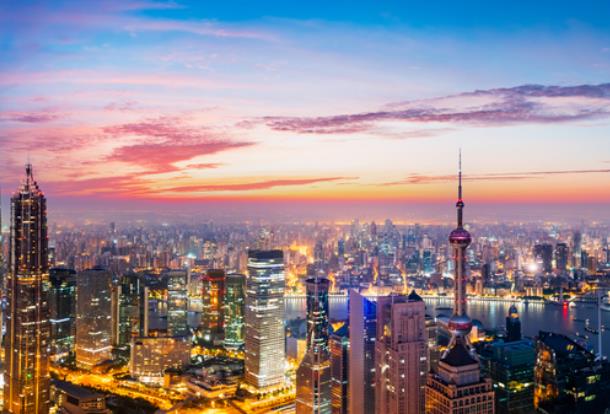The tour and activity space is undergoing a transformation.
After years of being seen as the ugly duckling of the travel industry (or as the add-ons that seldom actually get added on to a flight or hotel booking), tours-and-activities are now caught in the searchlight glare of big brands and investors looking for the next big thing.
The CEO of Expedia even mentioned destination activities in his panel discussion at the most recent Phocuswright Conference. For the tour-and-activity segment, that’s a big deal.
Along with this increased attention from brands and financiers has come a mushrooming of start-ups in the space — both on the supply and the consumer/retail sides.
Many of these start-ups appear to come out of the Silicon Valley’s “Go Big or GTFO” camp. One disturbing trend I’m observing is that the prevailing motivation with some of these start-ups is a desire to “own” the space — with little regard or concern for the existing ecosystem.
I read an article recently written by David Heinemeier Hansson (@dhh). He’s the co-founder and CTO of Basecamp, a software-as-a-service tool for project management that has been in business for more than 13 years. He is also someone that I admire tremendously and with whom I share a common approach to business.
In his recent article titled “RECONSIDER“, David discusses Silicon Valley’s obsession with unicorns and a wave of companies that have an all-or-nothing approach to their market.
“Part of the problem seems to be that nobody these days is content to merely put their dent in the universe. No, they have to fucking own the universe. It’s not enough to be in the market, they have to dominate it. It’s not enough to serve customers, they have to capture them.”
If we look at air, hotels, car rentals, vacation rentals, or pretty much any other vertical in the travel space, it’s pretty safe to say that no one owns that vertical.
Sure there are some big players like Priceline, Expedia, Sabre, Amadeus, Travelport, the list goes on, but they don’t own the vertical from supply to retail.
The hotel space for example has a healthy supply side technology ecosystem with property management systems, accounting, CRM, channel management, payment solutions, and more playing their roles to make things better for hotels.
Would it be easier for a hotel if they only had one choice in software for everything?
Sure, but would it be good for the hotel or the industry? Of course not. Despite the highly competitive nature of the travel space, there is an inherent collaboration that exists at the core of this industry.
Suppliers, technology providers, distributors, retailers, TMCs, agents — all competing in some ways but all part of the greater ecosystem.
So why would anyone want to own the tour-and-activity vertical? The answer lies in a false notion that the space is unsophisticated, open for disruption, and subject to dominance.
But is it really? Let’s examine a few myths.
Myth #1 – Tour and activity operators need technology
No, they don’t. Read the three Phocuswright reports on in-destination activities and you’ll see that (for the most part), operators serve customers in destinations directly as the primary driver of their revenues.
Roughly 80% of revenues in the segment are direct and in-destination. Many operators run seasonal businesses that require nothing more than a calendar and pencil (with a good eraser). They are perfectly happy with this solution.
In 2011, 80% of businesses in the sector didn’t even have websites!
Are these operators missing out on other opportunities like distribution? Could they be making more revenue through online bookings? Could they be managing their revenues and availability better? Sure, but most of these businesses don’t know what they are potentially missing because their heads are down, working on their businesses.
The bottom line: You’re selling aspirin to people who don’t have headaches.
The challenge that the industry faces is education. In order for businesses to adopt technologies, they either need to experience their first headache or they need to understand that the headache is inevitable and they can avoid it by using a technological solution.
This, of course, is much easier said than done which is why communities like Small Fish Big Ocean and Tourism Tribe exist.
Myth #2 – Owning supply means controlling distribution.
“Controlling distribution” assumes, of course, that there is distribution — and by that I mean true, open, electronic real-time distribution.
As of today, there is still only one global distribution channel. That is Viator, which launched its Supplier API in November of 2014.
I have no doubt that other brands will follow its lead. It will be necessary to have connections to inventory systems to access live real-time availability.
But, the reality is that distribution is still only a very small piece of the revenue pie for most suppliers.
As the distribution landscape grows, then the revenues from distribution will also grow. As distribution gains a larger role in driving revenues for businesses, those businesses will look to technology providers to fill the gap.
Yet Viator and GetYourGuide combined don’t “own” activities supply any more than Expedia or Priceline “owns” hotel supply or Kayak or Skyscanner “owns” airline supply. These brands are all channels that rely on a healthy and vibrant supplier ecosystem.
Myth #3 – The tour and activity space is primed for domination
Look at the history of travel technology and you’ll see that the very first recorded excursions were organized by Thomas Cook back in the 1840s.
In 1845 Cook organized more than 165,000 passengers using pen and paper. Just for context, the telephone would not be invented for another 30 years.
Tours and activities have been around for a long time and have been functioning quite well for 150 years without the aid of much technology.
From a technology standpoint, there is already a very long list of services, products, technologies, and solutionsserving the tours and activities space and more are added everyday. The likelihood that a new entrant is going to displace the entire set and dominate the space or even one category of the space, is pretty low.
What makes the in-destination space so interesting is the fact that it is so diverse, both in the experiences offered to travelers and the methods by which those travelers discover and book those experiences.
I have no doubt that solutions will come and go from the ecosystem.
What I do doubt however is the idea that the space will ever be dominated by a single all encompassing “OpenTable/Uber/Airbnb/Whatever” for tours and activities.
The travel industry, in general, is not particularly forgiving to entrants who claim the industry will “sh*t its pants“.
Myth #4 – There can only be one winner.
David says it best.
“Our definition of winning didn’t even include establishing that hallowed sanctity of the natural monopoly! We didn’t win by eradicating the competition. By sabotaging their rides, poaching their employees, orspending the most money in the shortest amount of time… We prospered in an AND world, not an OR world. We could succeed AND others could succeed.”
No one really knows how many businesses fall into the tour-and-activity space for sure, but the revenues tell a compelling story. The diversity is also just as vast, with businesses ranging from one person bike tours, private guided excursions, big bus tours, canal boats, and luxury helicopter rides.
Is it realistic to think that one platform is going to serve the needs of all these companies? I’ve never believed that and I still don’t.
There is enough opportunity for a lot of technology players. At multiple levels, each technology just needs to figure out where they make their dent in the Universe. I believe there is space for lots of solutions and for everyone to succeed.
Evolution takes time
The travel activities space is evolving. It is slowly but surely moving from a paper based segment to one that is driven by technology. As more brands make in-roads into retail and distribution we’ll continue to see more demand and pain from the supply side and more software tools to help mitigate those pains.
Don’t forget it has taken the hotel industry decades to come to grips with property, revenue, distribution, channel, and payment management.
Even with the advantage of cloud based solutions and software-as-a-service, why would we expect that in-destination activities, a much more fragmented and arguably less sophisticated segment, to come to grips with its inherent complexities any faster. As mentioned earlier, in-destination activities and the businesses that create them have been around for a long time.
With ongoing education, increased online demand, and growing distribution opportunities, we will see businesses move and adopt technologies and thereby increase supply that will continue to feed the ecosystem. But this is a process that takes time, commitment, and collaboration on the part of every player in the sector.
The old saying goes… “A rising tide lifts all boats”. For in-destination activities, the tide is coming in and all of the companies, existing and new, that are part of the segment stand to be lifted. Let’s ride the tide together… the voyage is just beginning.




